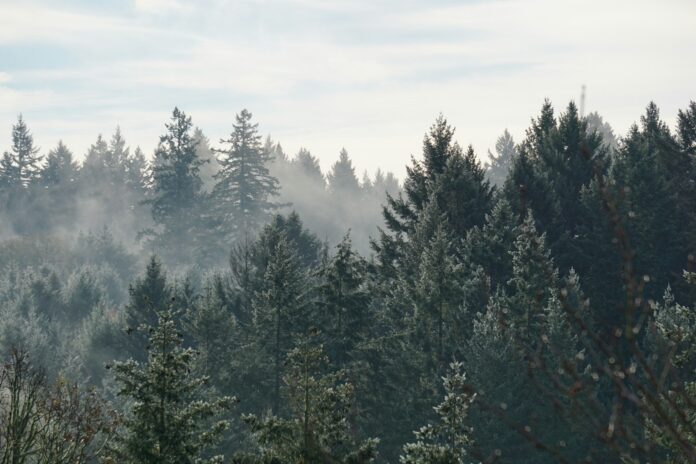Carbon sequestration refers to the process by which forests absorb carbon dioxide (CO₂) from the atmosphere and store it in biomass (trees, plants) and soil. This natural mechanism is crucial in mitigating the impacts of climate change, as it reduces the concentration of greenhouse gases in the atmosphere. Forest ecosystems, due to their extensive biomass and longevity, play a pivotal role in this process. The ability of different forest types to sequester carbon varies significantly, influenced by factors such as climate, soil type, species composition, and forest management practices.
Forests act as carbon sinks, capturing carbon through photosynthesis and storing it in their biomass. The carbon is then transferred to the soil through leaf litter, root decay, and other organic matter. This process not only helps in reducing atmospheric CO₂ levels but also enhances soil fertility and forest health. The efficiency of carbon sequestration in forests is influenced by the age of the forest, the rate of tree growth, and the forest’s overall health and biodiversity.
Understanding the carbon sequestration potential of various forest types is essential for developing effective climate change mitigation strategies. Different forest types, such as tropical rainforests, temperate forests, and boreal forests, have distinct characteristics that affect their ability to sequester carbon. By comparing these forest types, researchers can identify which ecosystems are most effective at capturing and storing carbon, thereby guiding conservation efforts and policy decisions.
Methodology for Assessing Carbon Sequestration Across Forest Types
Assessing carbon sequestration potential across different forest types involves a combination of field measurements, remote sensing, and modeling techniques. Field measurements typically include the collection of data on tree biomass, soil carbon content, and litterfall. These measurements are often conducted using standardized protocols to ensure consistency and accuracy. Researchers measure tree diameter, height, and species composition to estimate above-ground biomass, while soil samples are analyzed to determine organic carbon content.
Remote sensing technology, such as satellite imagery and LiDAR (Light Detection and Ranging), provides large-scale data on forest structure and biomass. These tools enable researchers to monitor changes in forest cover, assess forest density, and estimate carbon stocks over vast areas. Combining remote sensing data with field measurements allows for more comprehensive and accurate assessments of carbon sequestration potential.
Modeling techniques are used to integrate field and remote sensing data, predict future carbon sequestration, and simulate different forest management scenarios. Models can account for various factors such as climate change, forest age, and disturbance events (e.g., fires, logging). By using these models, researchers can estimate the long-term carbon sequestration potential of different forest types and evaluate the impact of different management practices on carbon storage.
Comparative Results of Carbon Sequestration in Different Forest Types
Comparative studies have shown that tropical rainforests generally have the highest carbon sequestration potential due to their dense vegetation and rapid growth rates. These forests can store large amounts of carbon in both their biomass and soil. However, they are also highly vulnerable to deforestation and degradation, which can release significant amounts of stored carbon back into the atmosphere. Effective conservation and sustainable management practices are crucial to maintaining the carbon sequestration potential of tropical rainforests.
Temperate forests, found in regions with moderate climates, also have substantial carbon sequestration capabilities. These forests typically have a mix of deciduous and evergreen species, which contribute to a diverse and resilient ecosystem. While temperate forests may not sequester carbon as rapidly as tropical rainforests, they often have higher soil carbon content due to slower decomposition rates. This makes them valuable long-term carbon sinks, especially when managed sustainably.
Boreal forests, located in high-latitude regions, have unique carbon sequestration dynamics. These forests are characterized by slow-growing coniferous trees and extensive peatlands, which store large amounts of carbon in the soil. Although the above-ground biomass in boreal forests is relatively low compared to tropical and temperate forests, the soil carbon content is exceptionally high. Climate change poses a significant threat to boreal forests, as rising temperatures can accelerate permafrost thawing and release stored carbon. Understanding these dynamics is crucial for developing strategies to protect and enhance the carbon sequestration potential of boreal forests.
The comparative analysis of carbon sequestration potential across various forest types highlights the importance of preserving and managing diverse forest ecosystems. Each forest type has unique characteristics that contribute to its ability to sequester carbon, and understanding these differences is essential for effective climate change mitigation strategies.
